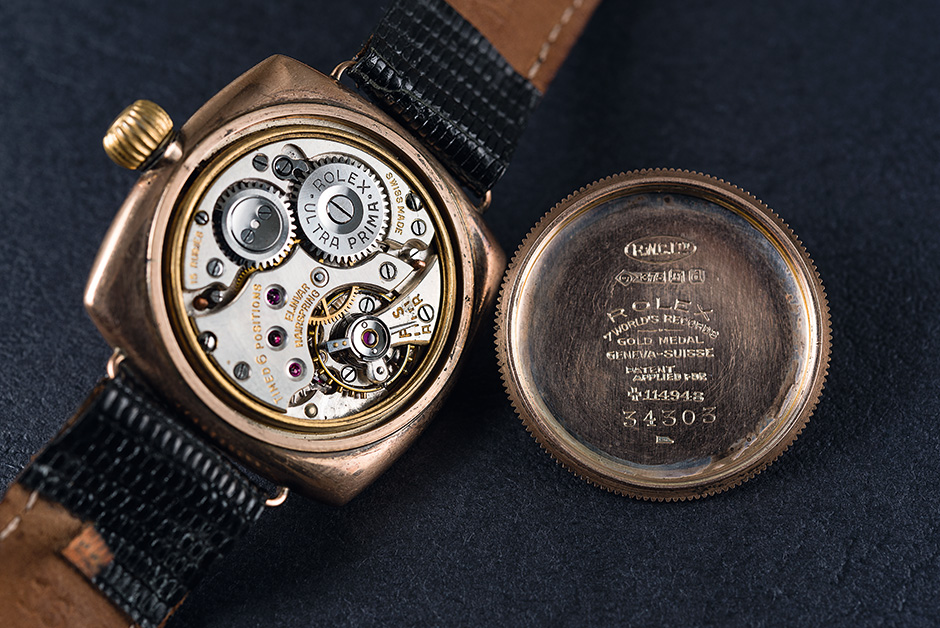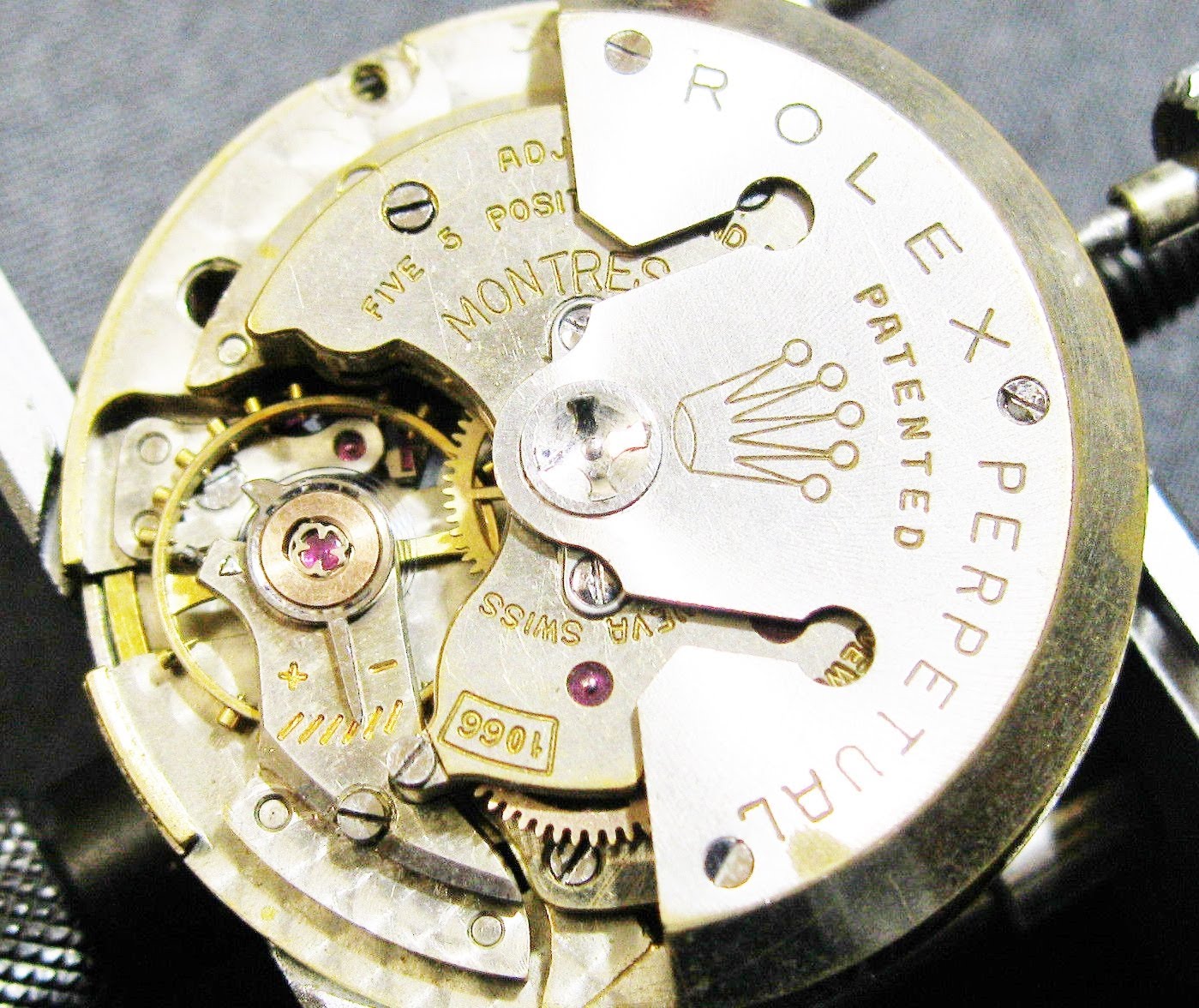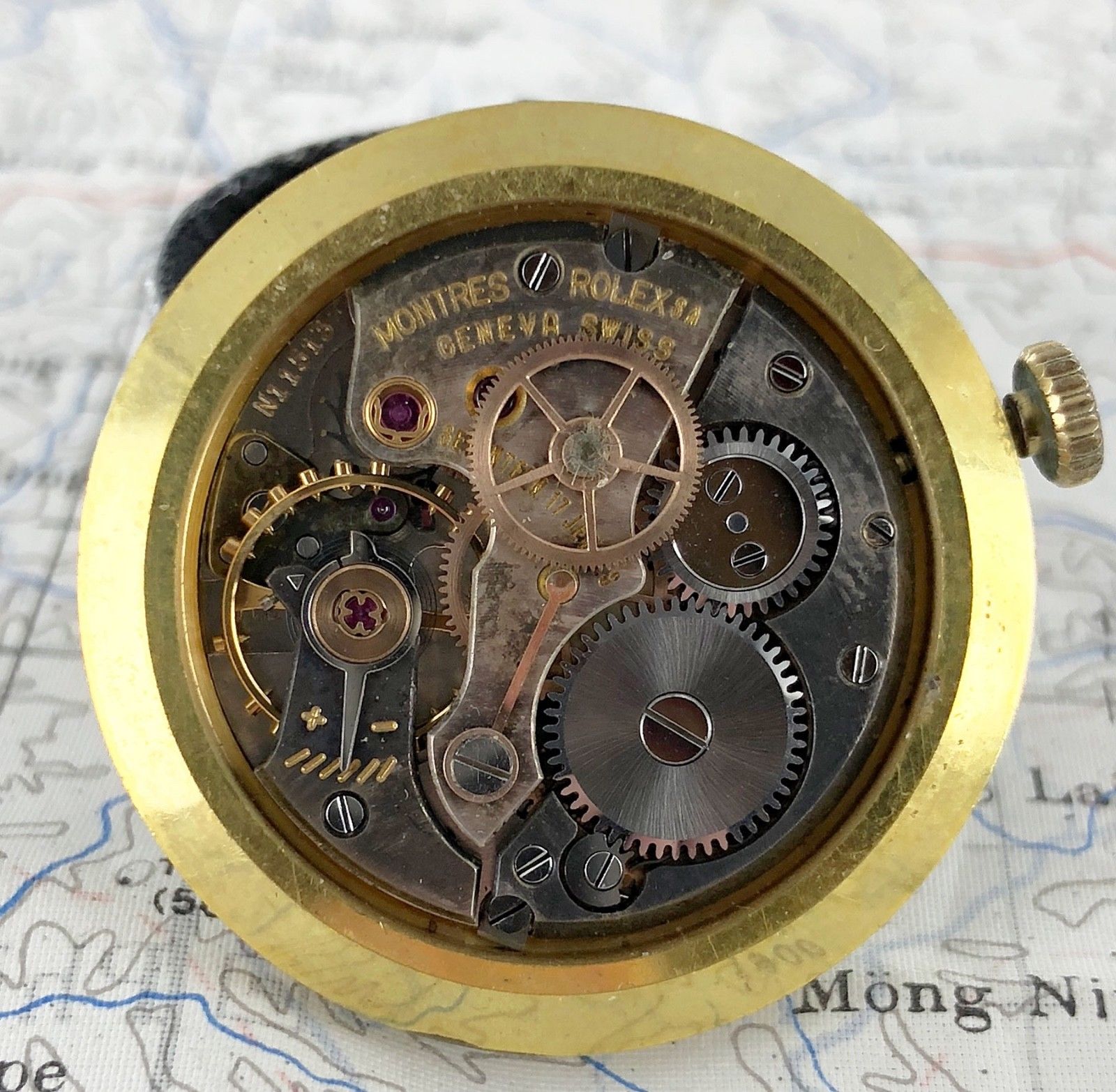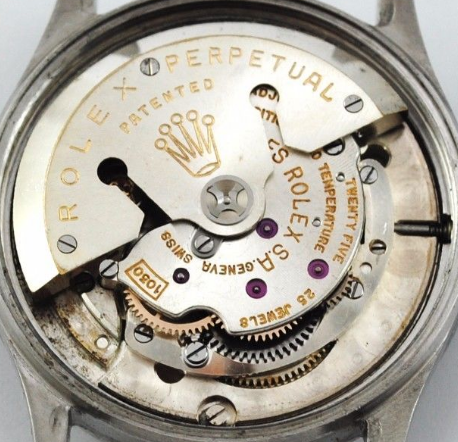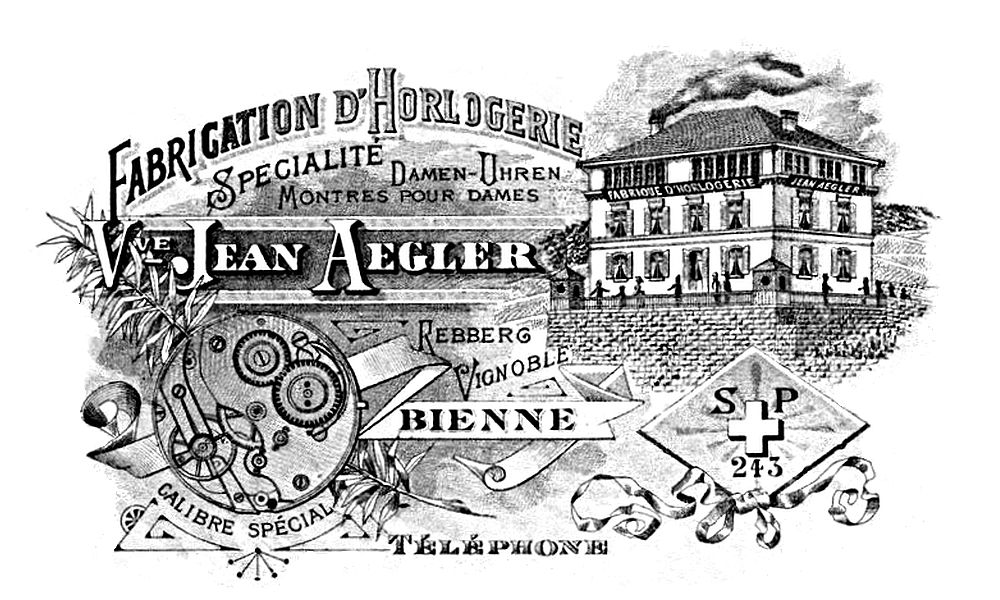History: The Hunter series of movements was introduced in 1923 and designed to replace the earlier Rebberg series. The new movements came in three versions: Prima, Extra Prima and Ultra Prima. The 10½ Hunter was named as 10½ is the size in lignes (23.7mm) and “Hunter” being the layout of the watch design, meaning that the winding crown was at 3, as in a hunter pocket watch (one with a lid that closed over the dial), rather than at 12 as in an open-face pocket watch. They are all 15 jewel constructions, and differentiated only by the timing tests carried out after construction: the best 10 per cent were given the coveted Ultra Prima designation, while the balance were split between Prima, which were the less accurate and Extra Prima, which fell in between. The Ultra Prima watches were also usually marked as such on the dial.
This early version of the Hunter was phased out with the introduction of the Superbalance series in 1935.
This early version of the Hunter was phased out with the introduction of the Superbalance series in 1935.
Manufacturer: The Aegler watchmaking company was established in Biel / Bienne in 1878 by Jean Aegler. Biel / Bienne is on the language boundary between the French and German speaking parts of Switzerland, hence the dual name for the town. Biel is German, Bienne its French counterpart.
Hermann Aegler made ebauches (unfinished movements) of a small size. After Rolex was founded they started importing Aegler’s movements and used them to make a variety of “wristlets,” selling them principally in the UK and in the British Empire, above all in Australia and New Zealand. His belief in the wristwatch format was confirmed by a precision test at Kew Observatory in London on 15 July 1914, when a 25-mm Rolex “wristlet” attained a Class A certificate, previously won only by much larger pocket watches.
Until 2004, Aegler was a completely separate legal entity than Rolex - it was owned by the Aegler and Borer families. Starting in 1936, they only produced watches for Rolex and operated as if they were a subsidiary of the Rolex brand. Aegler even changed its legal name to be more "Rolex-like". Eventually, in 2004, Rolex completed the legal acquisition of Aegler and Aegler became a de jure as well as de facto division of Rolex. For this reason, movements made by Aegler from 1936 to 2004 considered "In-House" Rolex mechanisms as they were only available in Rolex products, despite the fact they were made by Aegler.
Hermann Aegler made ebauches (unfinished movements) of a small size. After Rolex was founded they started importing Aegler’s movements and used them to make a variety of “wristlets,” selling them principally in the UK and in the British Empire, above all in Australia and New Zealand. His belief in the wristwatch format was confirmed by a precision test at Kew Observatory in London on 15 July 1914, when a 25-mm Rolex “wristlet” attained a Class A certificate, previously won only by much larger pocket watches.
Until 2004, Aegler was a completely separate legal entity than Rolex - it was owned by the Aegler and Borer families. Starting in 1936, they only produced watches for Rolex and operated as if they were a subsidiary of the Rolex brand. Aegler even changed its legal name to be more "Rolex-like". Eventually, in 2004, Rolex completed the legal acquisition of Aegler and Aegler became a de jure as well as de facto division of Rolex. For this reason, movements made by Aegler from 1936 to 2004 considered "In-House" Rolex mechanisms as they were only available in Rolex products, despite the fact they were made by Aegler.
Item Links: We found: 2 different collections associated with Manual - Hunter 10 1/2
- Collection Rolex: 3 different items.
- Collection Watch Movements: 1 different items.
Item created by: gdm on 2018-09-30 19:29:02. Last edited by gdm on 2018-10-16 22:08:25
If you see errors or missing data in this entry, please feel free to log in and edit it. Anyone with a Gmail account can log in instantly.
If you see errors or missing data in this entry, please feel free to log in and edit it. Anyone with a Gmail account can log in instantly.


